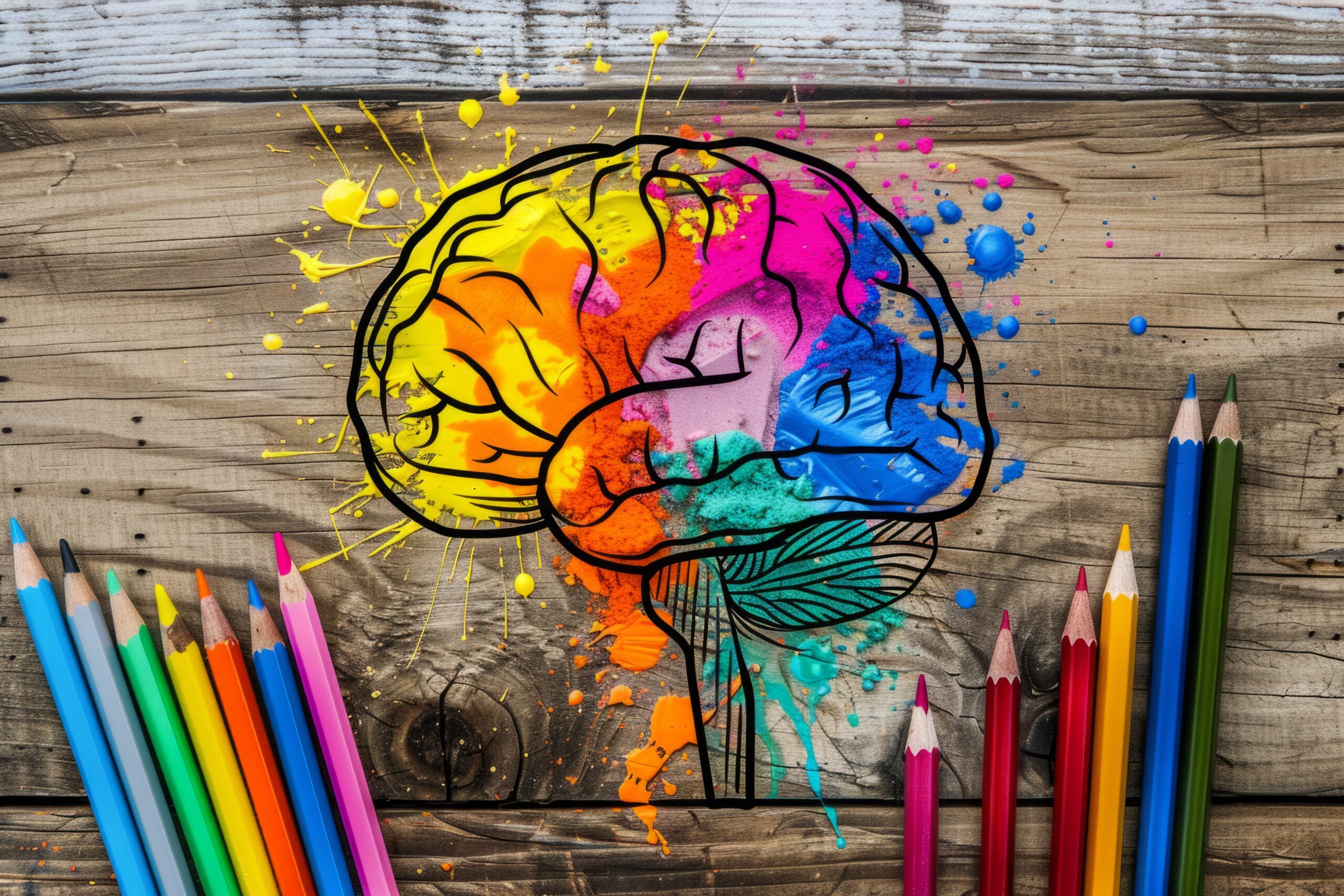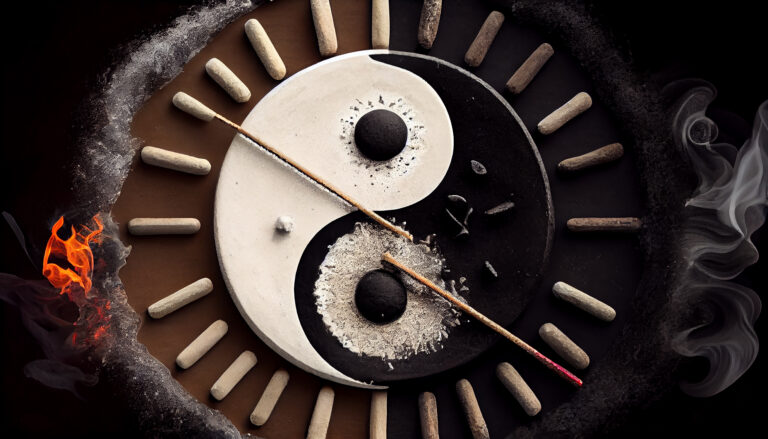Learning Yourself
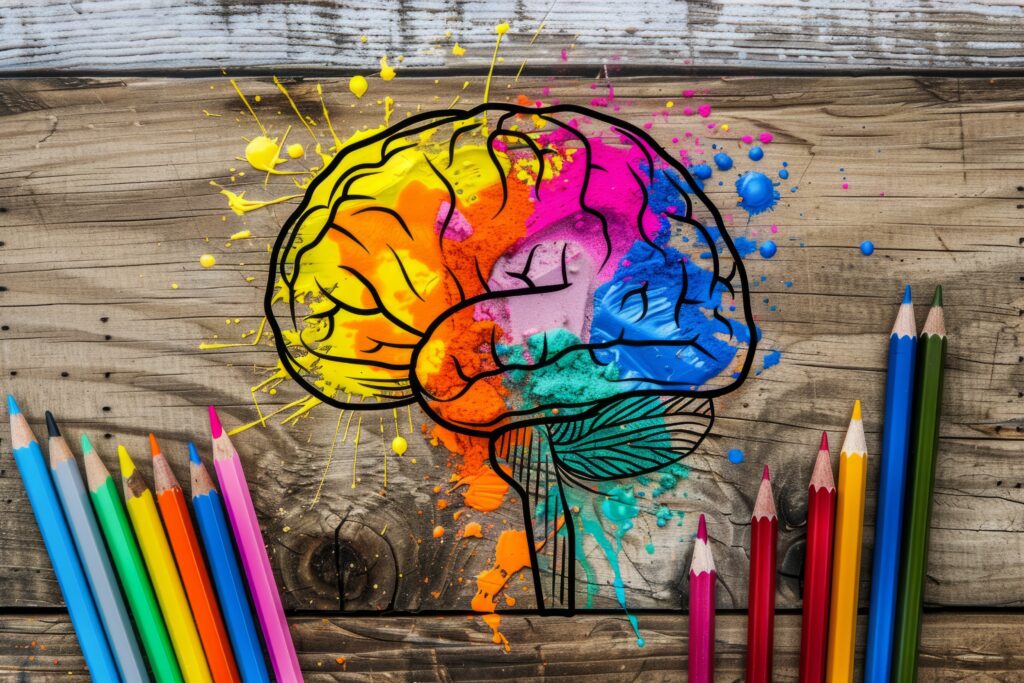
The melody flows through the speaker, enveloping you in rare tranquility. The world fades, and for a moment, the relentless noise in your mind quiets. But then—a sudden clatter, a buzz, a voice—and the calm shatters. You reach for your noise-canceling headphones, but it’s too late; the chaos rushes back with its demands. Anxiety swells, and your focus slips away, leaving you tangled in the web of distractions.
For neurodivergent individuals, these fleeting moments of peace are often disrupted by a relentless storm of thoughts and anxieties. Balancing creativity with mental health can feel like trying to compose a symphony in the midst of a thunderstorm—just when the melody begins, chaos crashes in. The strategies I use are far from new, if you want you will be able to find them hundreds of places, just like I did. But here is where there is often a disconnect: these articles will tell you what to do and they may even go into the physiological effects, but the explanations don’t connect the dots to show how this can be implemented to work from a neurodivergent perspective.
Understanding Neurodivergence and Creativity

Neurodivergence is like being handed a puzzle where the pieces keep changing shape. Sure, it’s frustrating when the picture doesn’t quite fit, but that’s also what makes it interesting—and sometimes, downright brilliant. To navigate this storm, we first need to understand the landscape. Our unique wiring isn’t just a challenge; it’s a different way of perceiving and interacting with the world.
Mental Reality:
- Manual Transitions: Adjust to new tasks and environments by consciously shifting your mental gears.
- Creative Superpowers: Leverage your unique thought processes to explore unconventional ideas and solutions.
- Distraction Dilemmas: Navigate the constant influx of distractions by managing and prioritizing your focus.
- Embracing the Chaos: Accept and harness the unpredictability of your mind to fuel creativity and innovation.
Manual Transitions:
Think of neurodivergence as having a brain that has to manually shift gears rather than having the ability to accept tasks/emotions/vibes/sensations/temperature/lighting and adjust instantly and without any conscious thought. For every change we have to push in the clutch shift to neutral check our current speed, versus the speed we want to achieve, decide what gear we are going into then shift to the appropriate gear. It’s a pain in the ass, but it isn’t impossible. Whether it’s ADHD’s hyperactivity or autism’s social quirks, our minds operate in ways that don’t quite match the neurotypical playbook. It’s like having your own personal TARDIS—sure, things can get a bit unstable, but it also means you get to explore creative dimensions others might miss.
Creative Superpowers:
What some call poor executive function, we prefer to think of as our creative edge. While neurotypical brains tend to settle on the most likely scenario and get to work, ours prefer a more…thorough approach. We don’t just solve problems; we consider every possible scenario, connection, and outcome before even picking up the hammer. It’s not about thinking outside the box—it’s about not even knowing there was a box to begin with. This overthinking isn’t just a quirk; it’s what fuels our creativity, leading us down paths others wouldn’t even consider. It’s like trying to organize a herd of cats, but with the added bonus that one of them might just lead you to a creative goldmine.
Distraction Dilemmas:
Every superpower has its Achilles’ heel. That flash of brilliance? It can disappear quicker than you can say ‘Squirrel!’ For someone with no mental filter, no ability to triage thoughts, and hyper-awareness of everything around and inside them—distractions multiply, tasks stack up, and suddenly you’re juggling more ideas than a psychological thriller has twists. It’s like playing a never-ending game of whack-a-mole with your focus—only, in this version, the moles keep bringing friends.
Embracing the Chaos

The trick isn’t to fight the chaos; it’s to ride the wave. By leaning into our quirks, we can turn the noise into something almost musical, like finding rhythm in the relentless pounding of a drum. Sure, it might feel more like navigating a storm with the wind lashing at your face than a leisurely stroll, but that’s where the magic happens. Our perspective isn’t only an obstacle; it’s also a place that holds joy. Where we find joy in our most daring, out-of-the-box creativity comes to life.
In the end, navigating neurodivergence is less about finding a perfect solution and more about embracing the mess. It’s a journey where the challenges and the creativity go hand in hand, and while it might not always be easy, it’s what makes our perspective so unique. The key is to find ways to work with the chaos rather than against it, and that’s where the real magic starts to happen. So, let’s go over some well known strategies that I am hoping to bring a more helpful perspective on.
Finding Your Focus Rhythm
Mastering hyper-fixations might seem as attainable as convincing a squirrel to do your taxes, but stick with me. Audrey Hepburn once said, “Nothing is impossible. The word itself says, ‘I’m possible.’” Cute, right? But in reality, finding your focus rhythm is more like trying to wrangle a herd of caffeinated squirrels. It’s about understanding your natural flow and working with it, not against it, because trying to force productivity can often feel like wrestling with a shadow—exhausting and ultimately pointless.
Practical Application:
- Identify Your Natural Flow: Discover when your brain is a superhero and when it’s a sloth.
- Create a Routine That Supports Your Rhythm: Design your day around these superhero hours, because forcing a sloth to work is just cruel.
- Adjust Based on Your Needs: Learn to tweak your routine so you’re not left staring at the void of unproductivity.
Identify Your Natural Flow:
First, you need to step away from your current routine like it’s a bad date and figure out when you’re at your most productive. This involves some serious self-observation. I took two weeks off from everything—yes, it was as thrilling as watching paint dry. But it was worth it. I found that my mornings are spent in a zen-like state of yoga and setting the robovac loose—basically, preparing the battlefield. After that, I go for a walk, which is about as close to a victory lap as I get before tackling work.
Create a Routine That Supports Your Rhythm:
Once you know when you’re at your sharpest, you can plan accordingly. My day starts with feeding everyone because, once I’m ensconced in my work, food becomes a distant memory until lunch. I tackle heavy mental tasks in the morning when my brain is still semi-functional and reserve creative endeavors for when I can almost remember how to spell “inspiration.” Knowing these peak times has allowed me to schedule breaks like lunch with my husband or picking up the kids—small victories that keep me from collapsing into an abyss of unproductive despair.
Adjust Based on Your Needs:
Everyone’s rhythm is different. For me, I get three solid blocks of hyper-focus: three hours in the morning, 1.5 to 2.5 hours in the early afternoon, and another three hours in the late afternoon—if the kids don’t stage a rebellion first. Embrace this rhythm and use it to structure your day. You might be a night owl, a morning person, or something in between. The goal is to find your own groove, so you’re not left floundering like a fish out of water. Transform your productivity from a chaotic mess into a well-orchestrated symphony—or at least something that resembles it.
By understanding and adapting to your own focus rhythm, you can turn the chaos into a rhythm that works for you, making your day less of a horror show and more of a manageable, if slightly unpredictable, journey.
Establishing a Flexible Routine

One of the most important concepts to learn is making sure you set yourself up to come at tasks with the right mood and mind set. Our brains are a never ending game of chess and we have to always make sure we are always considering the next 6 moves because this allows for mental preparation and calibration. Since our brains operate like the energizer bunny on speed, a lot of us already do this, it is what makes us so agitated when plans change or aren’t followed. Imagine a routine as less of a rigid structure and more like a winding river, ever-adapting to the turbulent twists and turns of your day. Rather than envisioning it as a straitjacket of schedules, think of it as a flowing current, guiding you with a sense of ease through life’s occasional rapids.
Practical Application:
- Morning Rituals: Establish a calming start to your day that centers your mind and body.
- Physical Movement: Incorporate activities that reset your energy and enhance mental clarity.
- Creative Warm-up: Ease into your creative work with activities that stimulate inspiration without pressure.
Morning Rituals:
Start your day with a calming ritual the purpose of which is to allow you to start the day at homeostasis. It doesn’t matter what the practice is, nor does it matter if you have a different one for every day of the week. Weekdays I do yoga and on weekends I listen to music for an hour. Picture this as your quiet sanctuary—a moment of peace where you might listen to soothing music, meditate, or just bask in the stillness of the morning. This ritual is your mental shield, preparing you to face the day’s relentless barrage of demands.
Physical Movement:
Physical activity serves as a reset button for your body and mind. Have you ever switched tasks only to find that your body doesn’t seem to want to cooperate? Where a neurotypical only has to think of a new task to evoke a change in muscle memory, I often have to do a physical and mental reset because I have to manually shift both my body and my mind. A complete palate cleanser. I need my palate cleansers to be at least twenty minutes. Ten minutes to “shut down” from the last activity and another ten to mentally calibrate for the next.
Creative Warm-up:
This is going to sound weird, but for me this used to be doing my makeup in the morning. The goal here is to ease into creative work with a gentle, inspiring activity that doesn’t demand perfection (this comes with doing your same makeup routine for decades). I chose my makeup routine because I love it as an art form and it was something I was already doing. Allergies have veered me away from makeup since moving to Texas, so now I like to start my day singing and dancing while making breakfast or setting up for the day.
Establishing a flexible routine is like tuning an instrument—your brain is the instrument, and your routine is the tuning process that gets it ready to perform. It’s not about hitting every note perfectly; it’s about finding the rhythm that keeps you in harmony with your day. By blending structure with adaptability, you can create a routine that feels more like a dance than a drill—fluid, responsive, and uniquely yours. Now, let’s explore some practical ways to put this into action, starting with morning rituals and physical movement that ground you, and creative warm-ups that ignite your spark.
Balancing Productivity

Achieving a productive workflow isn’t just about diving headfirst into tasks; it’s about managing your mental energy to dodge the burnout trap. Balancing high-focus periods with mundane tasks, crafting an environment for deep work, and weaving in mindful breaks are essential to maintaining both your productivity and your sanity. Think of your day as a high-stakes game where you alternate between intense focus and routine tasks, set the stage for immersive work sessions, and strategically pause to recharge. These strategies are your lifeline to navigating the challenges of sustained focus without spiraling into exhaustion.
Practical Application:
- Dual Task Approach: Alternate between high-focus and mundane tasks.
- Flow States: Craft an environment for deep, immersive work.
- Mindful Breaks: Integrate breaks to avoid complete mental collapse.
Dual Task Approach:
I’ve found that I maintain better focus when I juggle two tasks—one that demands heavy mental lifting and another that’s more repetitive and physical. For instance, I write while sewing inventory for my Etsy shop. This works because of my writing process: sit, write, then replay what I’ve written while sewing on autopilot, go back, and fix the writing. Rinse. Repeat. It’s a balance—one task is analytical (sewing) while the other is creative (writing). Plus, keeping my analytical brain occupied while I write helps keep imposter syndrome at bay.
Flow States:
The goal is to reach a flow state where the task at hand feels almost effortless, like slipping into a daydream. Cut out distractions and fully immerse yourself, using scents, soundtracks, or ambient noise to create an environment as all-encompassing as a well-timed jump scare.
Mindful Breaks:
Regular breaks might seem like a nuisance, but they’re essential. I find that breaking when I’m still riding the high of my hyperfixation helps stretch it over days, weeks, even months. Think of these breaks as necessary intermissions in a grueling marathon. You might grumble about the interruption, but your mental and physical well-being will thank you. Keep a break schedule until it becomes as routine as your caffeine fix.
Most importantly, don’t expect this to be easy. It won’t be, and it isn’t. We’re often told it’s easy, and we believe it because those who explain it to us have that nifty automatic feature in their brains. But if you approach this with the understanding that it’s not easy, you’ll be more patient with yourself when things don’t work out on the first try. Habits aren’t something you can just decide to start doing—they’re something you have to build, brick by brick.
Supportive Schedules
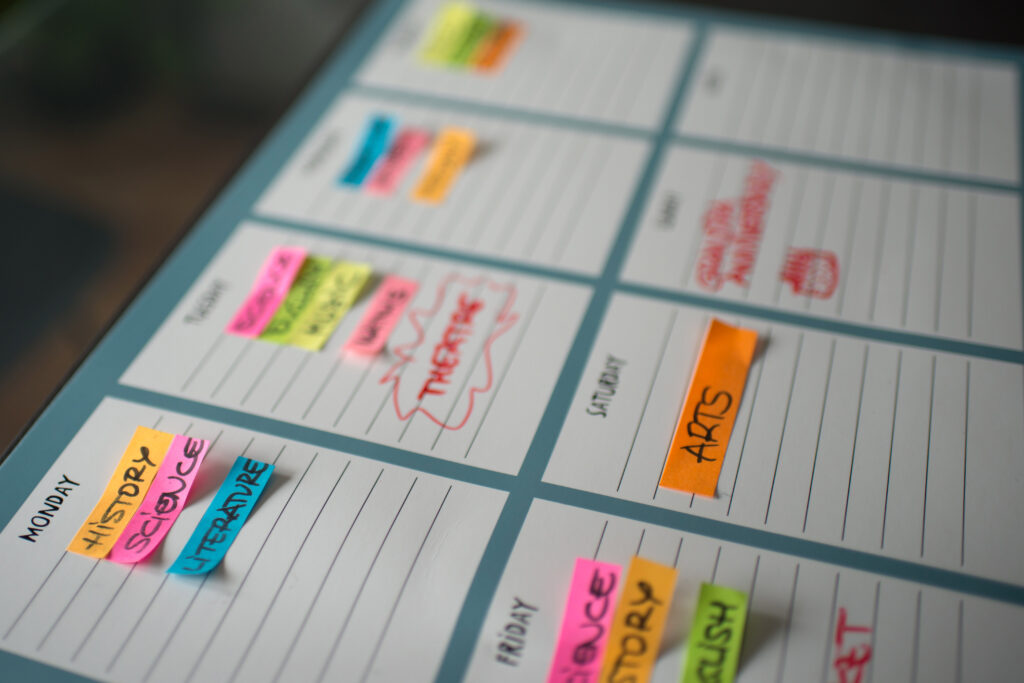
Practical Application:
- Digital Reminders: Use apps for unobtrusive nudges.
- Visual Calendars: Track tasks with an engaging calendar.
- Nightly or Weekly Planning: Regularly update your plans.
Digital Reminders:
Employ digital apps to set reminders that poke you just enough to keep you on track. These are the digital equivalent of that one persistent, annoying friend who’s always nudging you to get things done, without the actual social awkwardness.
Visual Calendars:
Invest in a large, visually striking calendar that grabs your attention with all the subtlety of a neon sign. This isn’t just a calendar; it’s a gaudy reminder of your commitments, making it impossible to ignore, like an unsightly scar that refuses to fade.
Nightly or Weekly Planning:
Dedicate time each night or week to update your calendar. This habit transforms scheduling from a rigid taskmaster into a flexible partner, like a grim but trusty sidekick who helps you navigate your daily labyrinth without turning you into a human pretzel.
By establishing a routine that flows with your needs, finding your focus rhythm, and using supportive schedules, you’ll create a daily rhythm that aligns with your neurodivergent mind. This approach turns chaos into a well-orchestrated flow, transforming daily struggles into an almost elegant dance with your own brand of dark humor.
Conclusion
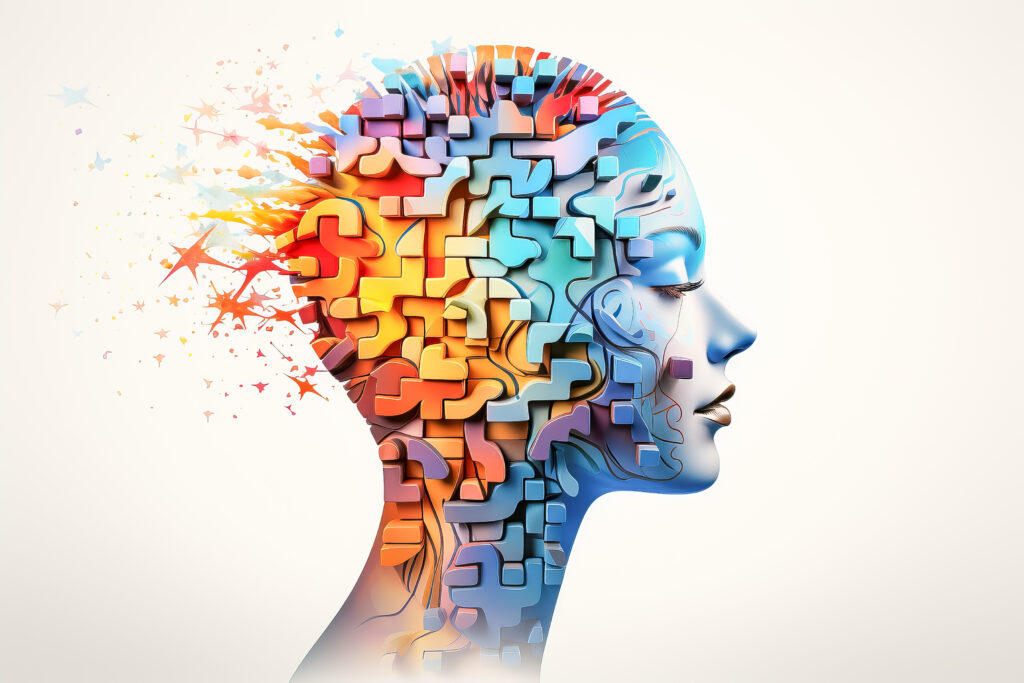
In the end, balancing mental health and creativity isn’t about finding a one-size-fits-all solution; it’s about understanding and embracing your unique rhythm. As you explore these strategies, remember that it’s okay to stumble and adjust as you go. This journey is about finding what works best for you, so don’t be afraid to experiment and adapt. In the next part, we’ll delve deeper into building resilience and maintaining creativity even when the going gets tough. Until then, keep riding the wave and trust in your ability to navigate the storm.
This article started as a single article, but as I wrote, I realized there was so much more to explore. Most articles miss the mark by focusing solely on the what’s and the physiological responses. While these aspects are important to understand, they often overlook the crucial whys and hows of applying this knowledge in real-life situations, leaving us with an incomplete instruction manual. I can’t say for sure if this will help anyone; as I mentioned earlier, none of these concepts are entirely new. But my hope is that by offering a different perspective, something will click for at least one person.
I’m not sure how many articles this series will end up being because the more I write, the more I discover what needs to be said. What I do know is that this journey of balancing mental health with creativity is ongoing, and if even one person finds clarity or comfort in these words, then it’s worth continuing.
